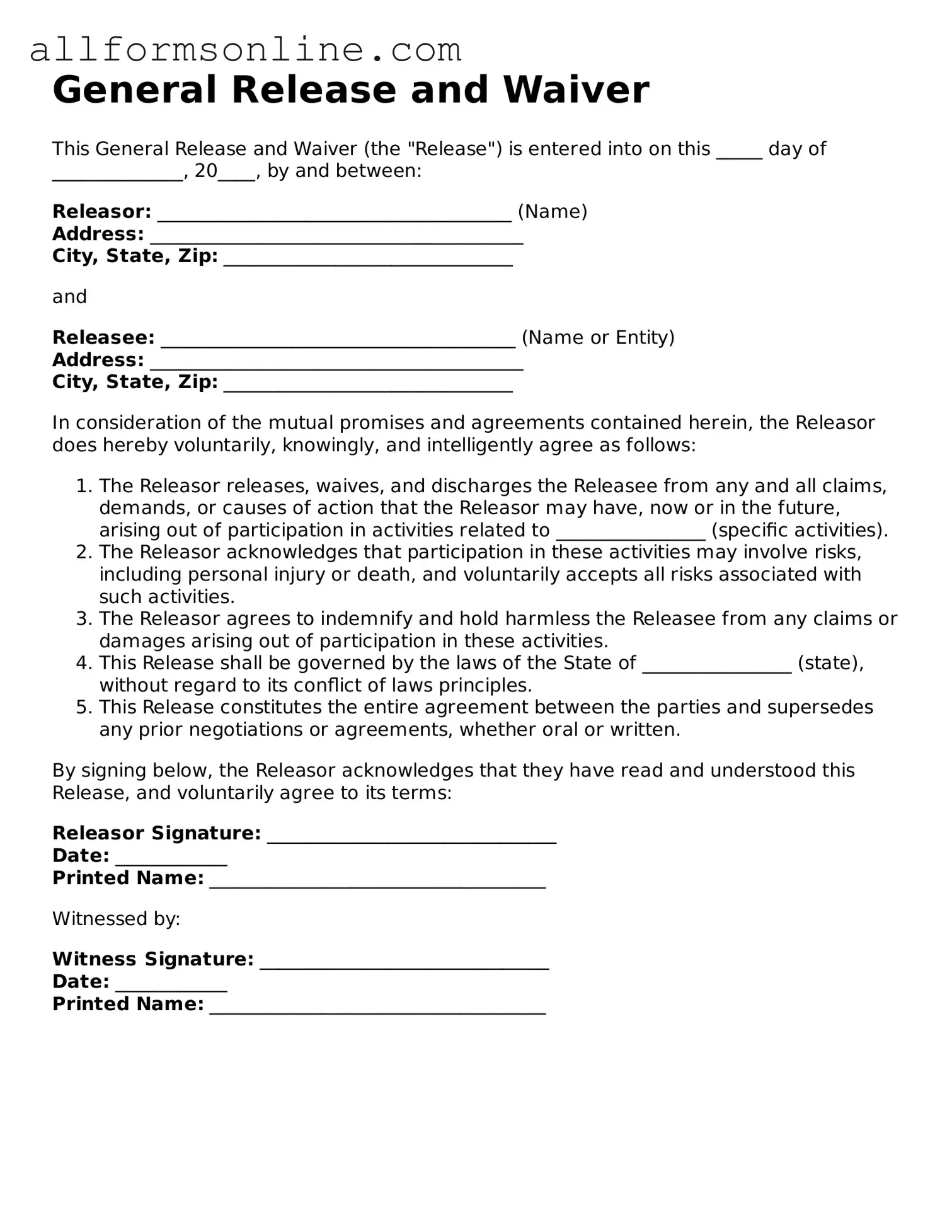What is a General Release and Waiver form?
A General Release and Waiver form is a legal document that allows one party to release another party from liability for certain actions or events. This form is often used in various situations, such as settling disputes, waiving rights to sue, or acknowledging the assumption of risk in activities. By signing this form, the individual agrees not to hold the other party responsible for any potential claims or damages that may arise in the future related to the specified circumstances.
When should I use a General Release and Waiver form?
This form is typically used in situations where one party wishes to participate in an activity that carries some risk, such as sports, recreational activities, or events. It can also be used in settlement agreements to resolve disputes without further legal action. If you are unsure whether to use this form, it may be beneficial to consult with a legal professional.
What are the key components of a General Release and Waiver form?
A General Release and Waiver form generally includes several important components. These include the names of the parties involved, a clear description of the activities or events being released, the scope of the waiver, and any limitations or conditions. Additionally, the form usually requires the signature of the individual releasing their rights, along with the date of signing.
Is a General Release and Waiver form legally binding?
Yes, a properly executed General Release and Waiver form is legally binding. Once signed, the individual who releases their rights typically cannot pursue legal action against the other party for the specified claims. However, the enforceability of the form may depend on various factors, such as the clarity of the language used and whether the individual fully understood the implications of signing.
Can I modify a General Release and Waiver form?
Modifications to a General Release and Waiver form can be made, but both parties must agree to any changes. It is crucial to ensure that all modifications are clearly documented and initialed by both parties to avoid any misunderstandings. If significant changes are made, it may be advisable to draft a new form altogether.
What happens if I do not sign the General Release and Waiver form?
If you choose not to sign the form, you may not be allowed to participate in the activity or event that requires the waiver. Additionally, without signing, you retain your right to pursue legal action for any claims that may arise from the activity. It is important to weigh the potential risks and benefits before making a decision.
Are there any risks associated with signing a General Release and Waiver form?
Yes, signing a General Release and Waiver form carries inherent risks. By signing, you may be giving up your right to seek compensation for injuries or damages that occur as a result of the activity. It is essential to read the document carefully and understand what rights you are waiving. If there are any concerns, consider discussing them with a legal professional before signing.
Can a General Release and Waiver form be revoked after signing?
Generally, once a General Release and Waiver form is signed, it cannot be revoked. However, there may be specific circumstances under which a waiver can be contested, such as if the form was signed under duress or if the terms were misleading. If you believe there are grounds for revocation, seeking legal advice is recommended.
